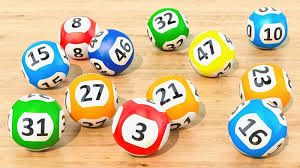Telur Kepiting - Kepiting termasuk salah satu hewan laut yang harus ada ketika makan seafood. Kepiting bahkan merupakan yang paling favorit diantara seafood lainnya.
Diantara kepiting jantan dan betina , kepiting betina merupakan yang paling banyak disukai karena terdapat telur kepiting pada kepiting betina.
Ini juga yang membuat harga kepiting betina lebih mahal dibandingkan dengan kepiting jantan, kepiting betina bahkan lebih langka dan susah dicari ketimbang kepiting jantan.
Telur kepiting memiliki rasa yang enak , manis , creamy dan akan lumer di mulut saat dikonsumsi. Wahh , memikirkannya saja sudah membuat ngiler ya gengs!
Disamping rasanya yang enak , telur kepiting ternyata memiliki manfaat kesehatan untuk tubuh , apa saja manfaat kesehatannya ?
Berikut dibawah ini penjelasannya gengs:
1 . Telur kepiting kaya akan mineral tinggi yang dapat membantu untuk mencegah pembesaran prostat dan mencegah kerontokan pada rambut.
2 . Telur kepiting mengandung omega-3 yang diyakini dapat membantu untuk mengontrol dan menurunkan kadar kolesterol jahat di dalam tubuh.
3 . Manfaat lain dari omega-3 yang terdapat pada telur kepiting adalah menyehatkan jaringan syaraf dan organ mata.
4 . Telur kepiting jika dikonsumsi oleh anak-anak secara rutin maka dapat membantu meningkatkan kecerdasan pada otak , yang dimana sangat membantu dalam hal mengingat dalam proses pembelajaran.
5 . Merupakan sumber protein tinggi , protein yang terkandung bahkan lebih banyak dari yang terkandung dalam hewan laut lain.
6 . Telur kepiting mengandung lemak jenuh yang sedikit , ini dapat membantu untuk menghindari penumpukan lemak jahat yang bisa menyebabkan kegendutan. Dengan kata lain telur kepiting dapat membantu menurunkan berat badan.
7 . Dapat membantu untuk meningkatkan kesehatan pada sendi dan tulang karena telur kepiting kaya akan mineral , omega-3 dan protein.
8 . Telur kepiting juga merupakan sumber antioksidan , yang dapat membantu untuk menangkal efek radikal bebas penyebab berbagai penyakit berbahaya.
9 . Antioksidan yang terkandung juga dapat mencegah terjadinya kerusakan pada sel dan membantu untuk meningkatkan sistem imun tubuh.
Itulah beberapa manfaat kesehatan dari mengonsumsi telur kepiting , semoga informasi ini bermanfaat dan salam kesehatan untuk kita semua!











































